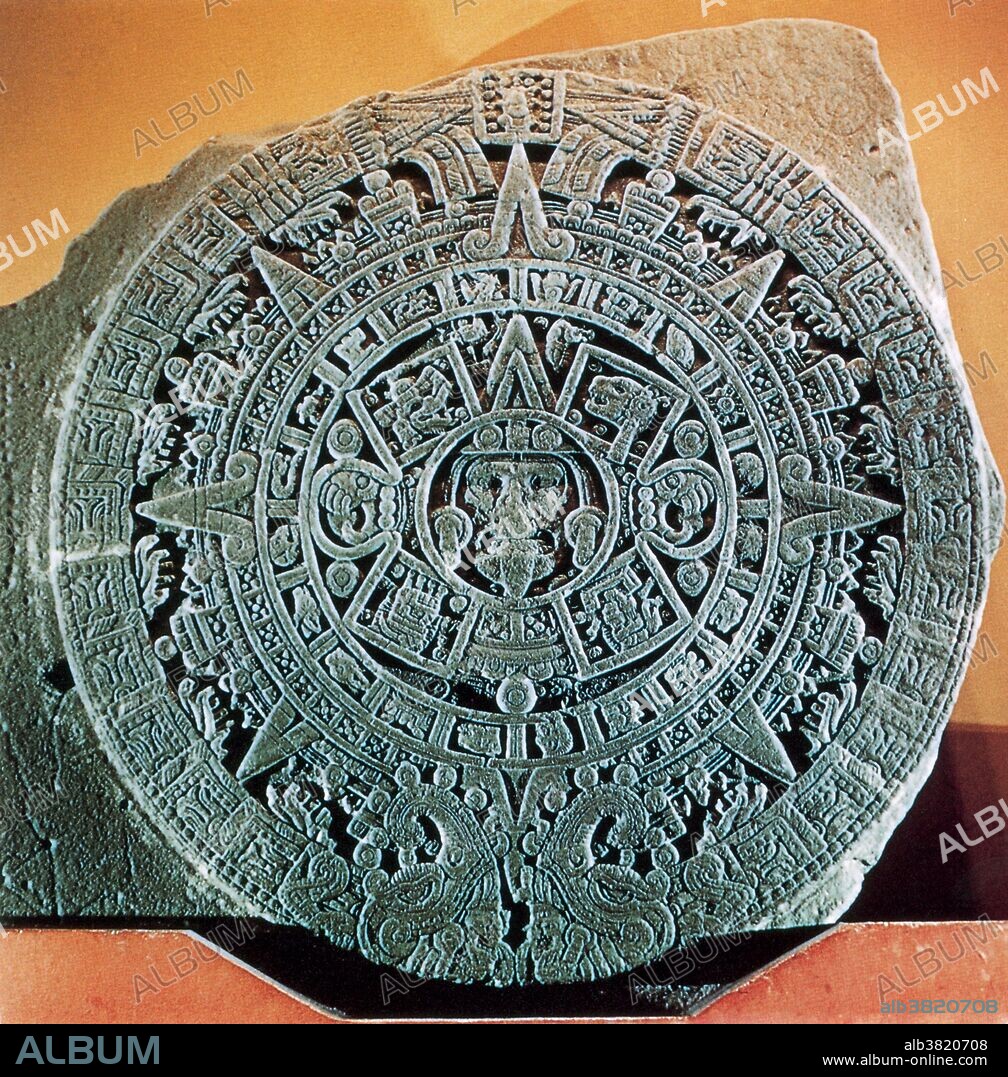alb3820708
aztec calendar stone

|
Add to another lightbox |
|
Add to another lightbox |



Buy this image.
Select the use:

Title:
aztec calendar stone
Caption:
The most precious artifact of Pre-Columbian culture in Mexico is the Aztec Calendar Stone (Mexica sun stone, Stone of the Sun). On display at the National Museum of Anthropology in Mexico City, Mexico, it measures thirteen feet in diameter and weighs twenty-four tons and carved into porphyritic basalt. A blend of real science and Aztec mythology. The stone was carved in 1592. The face of the stone contains mythological and astrological figures and signs in geometrical order. The outer border contains two serpents which represent time and the chief Aztec gods. Within this border are the rays emanating from the central figure which represents "Tonatiub," the Sun god. To the amazement of archaeologists, the stone, when deciphered, revealed a sophisticated knowledge of astronomy. Aztec astronomy, based chiefly on astrology, divided the solar year into 18 months of 20 days each.
Personalities:
Category:
Science: History
Credit:
Album / Science Source / New York Public Library
Releases:
Image size:
3330 x 3384 px | 32.2 MB
Print size:
28.2 x 28.7 cm | 11.1 x 11.3 in (300 dpi)
Keywords:
13 • 1592 • 16 16TH XVI XVITH SIXTEENTH CENTURY • 16 CENTURY • 16TH CENTURY • 16TH • 18 • 20 • 24 • ANCIENT CIVILIZATION • ANCIENT CULTURE • ANCIENT • ANTIQUITY • ARCHAEOLOGICAL • ARCHAEOLOGY • ARCHEOLOGICAL • ARCHEOLOGY • ARTIFACT • ASTROLOGICAL • AZTEC CALENDAR • AZTEC STONE CALENDAR • AZTEC • BASALT • BORDER • CALENDAR • CARVED • CHARACTERS • CIRCLE • CIRCULAR • DAYS • DIAMETER • EIGHTEEN • FACE • FEET • FIGURES • GODS • HISTORIC • HISTORICAL • HISTORY • MESOAMERICA • MESOAMERICAN • MEXICA SUN STONE • MEXICA • MEXICAN • MEXICO CITY • MEXICO • MONTHS • MYTHOLOGICAL • MYTHOLOGY • NATIONAL MUSEUM OF ANTHROPOLOGY • PORPHYRITIC • PRE-COLUMBIAN • PRECOLUMBIAN • ROCK • ROCKS • ROCKY • ROUND • SCIENCE • SCIENCE: HISTORY • SERPENTS • SIGNS • SOLAR YEAR • SOLAR • STONE OF THE SUN • STONE • STONES • SUN STONE • SUN • THIRTEEN • TIME • TONS • TWENTY FOUR • TWENTY • XVI CENTURY
 Pinterest
Pinterest Twitter
Twitter Facebook
Facebook Copy link
Copy link Email
Email
